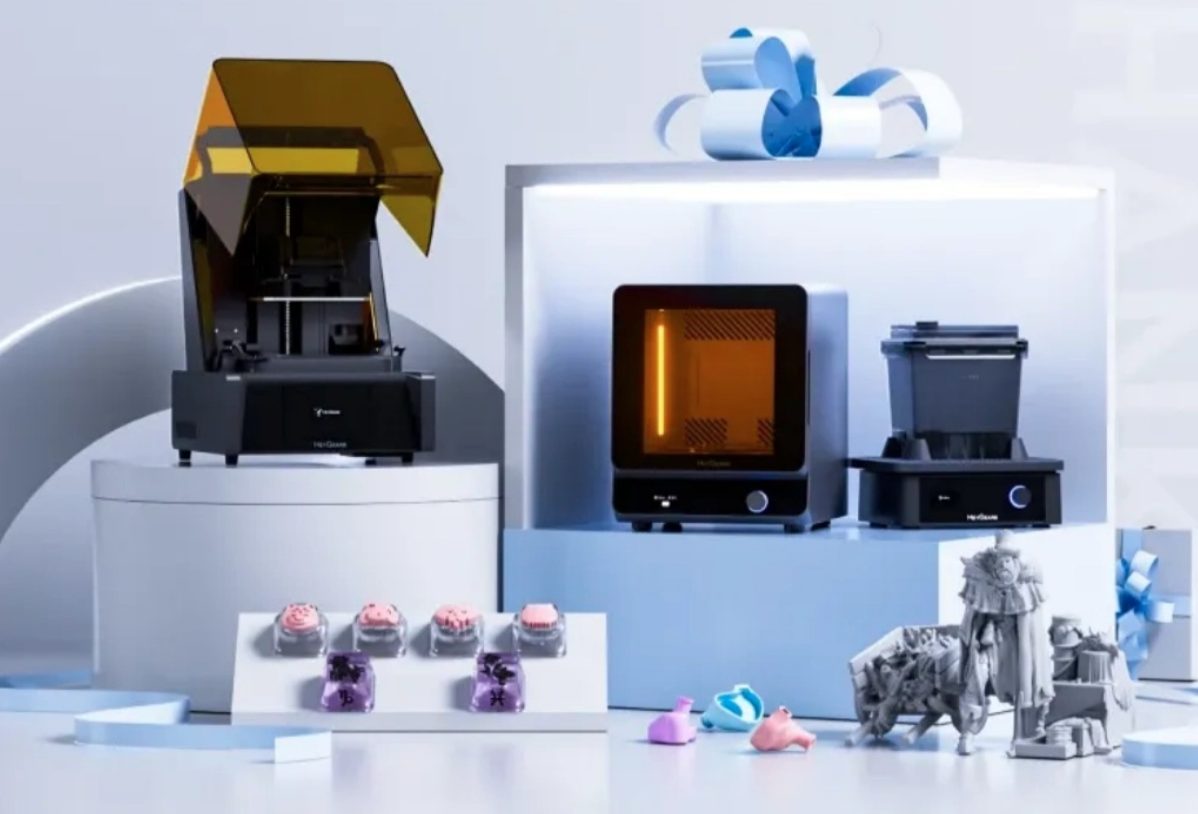
3D Printing Resin vs Filament: Which Is Right for Your Projects?
When starting a 3D printing project, one of the first decisions to make is choosing between 3D printing resin and traditional filament materials. Each method offers unique benefits depending on your goals, from fine detail and smooth surface finishes to stronger, functional parts.
Whether you’re a beginner or planning to upgrade your setup with a resin 3D printer, understanding how these technologies compare can help you make the right choice for your project needs.
Understanding the Core Differences Between Resin and Filament Printing
Printing Technology Basics
Filament printers (FDM) work by melting and extruding thermoplastic material layer by layer, while resin printers (SLA, DLP, or LCD) use UV light to cure liquid resin into solid shapes.
These fundamental differences in process influence not only print speed and quality but also the types of objects each method is best suited to produce.
Surface Quality and Precision
If you’re aiming for high-resolution prints with fine detail—such as miniatures, dental models, or jewelry prototypes—resin printing delivers smoother surfaces and crisper features compared to filament.
Filament prints may show visible layer lines, whereas resin models often require minimal post-processing to look polished and professional.
Material Strength and Durability
Filament materials like PLA, PETG, or ABS tend to offer better mechanical strength, making them ideal for structural or load-bearing parts. On the other hand, resin materials can be brittle unless you choose specially formulated engineering resins that offer impact resistance, heat tolerance, or flexibility.
Use Case Comparisons: Which Suits Your Application?
Hobbyists, Designers, and Artists
For those focused on models, collectibles, or visual prototypes, resin printers are often preferred for their aesthetic output. Artists and designers appreciate the accuracy and detail that resin delivers, especially when using high-resolution LCD printers.
Engineers and Product Developers
If you’re prototyping functional parts, especially ones that need testing under stress or heat, filament printers are usually more cost-effective and practical. However, specialized 3D printing resin can still serve well for snap-fit assemblies or enclosure designs where detail is more important than strength.
Educational and Office Use
FDM printers are easier to manage in school or office environments due to their lower maintenance and safety requirements.
Resin printing requires careful handling of chemicals and post-curing processes, which might not be suitable for every setting unless proper training and ventilation are available.
Cost and Maintenance Considerations
Upfront and Ongoing Costs
FDM printers tend to be more affordable upfront, and their filament materials are less expensive and widely available. Resin printers can cost more initially, and the resin itself may be pricier per print, especially when factoring in cleaning and curing accessories.
Cleaning, Storage, and Post-Processing
Resin printing requires additional steps after printing, such as isopropyl alcohol cleaning, UV curing, and safe disposal of liquid waste. Filament printing is generally simpler in maintenance, although occasional nozzle cleaning and bed leveling are still necessary.
Which One Should You Choose?
Making the Right Decision Based on Your Needs
If your priority is detailed visual output, smooth finishes, or professional-looking models, a resin 3D printer is likely the best match.
But if you’re focused on mechanical strength, fast iterations, or cost efficiency for prototyping, filament printing remains a solid choice. In some cases, using both types of printers within a workflow may provide the most flexibility—resin for detail, filament for function.
Conclusion
Choosing between printer 3D resin and filament printing comes down to your specific goals, budget, and use environment. With innovations in both fields, it’s easier than ever to find a setup that fits your workflow.
Explore HeyGears’ lineup of high-performance resin 3D printers and materials to discover how they can elevate your next project—whether you’re building display models, precision components, or anything in between.



 Bitcoin
Bitcoin  Ethereum
Ethereum  Tether
Tether  XRP
XRP  Solana
Solana  USDC
USDC  TRON
TRON  Lido Staked Ether
Lido Staked Ether  Cardano
Cardano  Avalanche
Avalanche  Toncoin
Toncoin